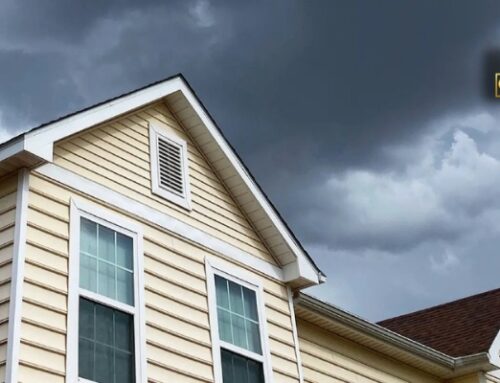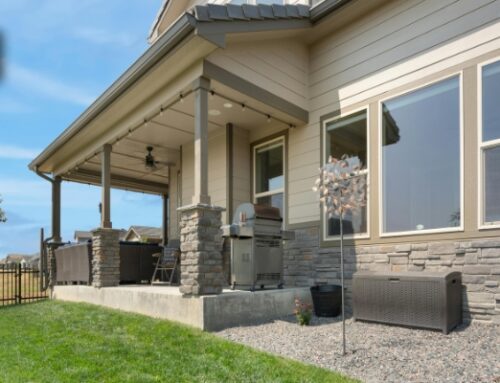Your home’s siding isn’t just about looks anymore—today’s advanced materials are like a high-tech support system for your house, locking in comfort and slashing energy bills. Gone are the days when siding simply sat there looking pretty (or not). The latest innovations actively fight heat loss, block moisture intrusion, and even generate solar power.
But with so many “energy-efficient” claims out there, how do you know which options actually work? We’re cutting through the marketing hype to reveal:
- Which siding materials insulate best (spoiler: one can save you 20% on HVAC costs).
- How color and texture impact thermal performance (dark vs. light isn’t what you think).
- The emerging tech turning siding into power plants.
- Real-world ROI from energy-saving siding upgrades.
Whether you’re battling freezing winters, scorching summers, or just want to stop throwing money at utility companies, your siding choice matters more than ever.
1. Insulated Vinyl Siding: The Budget-Friendly Performer
Modern vinyl isn’t just plastic siding. It comes with integrated foam backing, it creates a thermal barrier that standard siding can’t match.
Why It Works:
- R-Value Boost: Adds R-2 to R-4 insulation (compared to R-0.5 for traditional vinyl).
- Air Gap Magic: Channels behind panels prevent thermal bridging.
- Cost Effective: Only 10-15% more than basic vinyl, but cuts heating/cooling bills by 10-20%
Ideal For:
- Cold climates where heat retention is critical.
- Homeowners who want better efficiency without major renovations.
2. Fiber Cement with Insulated Backer Board: The Premium Solution
When paired with specialty sheathing, fiber cement becomes an efficiency powerhouse.
Key Advantages:
- Combats Thermal Bridging: Breaks the path for heat transfer through studs.
- Moisture Defense: Prevents insulation from getting damp and ineffective.
- Long-Term Payoff: 25% better thermal performance than standalone installation
3. Engineered Wood Siding with Thermal Mass
New composite wood products incorporate phase-change materials that absorb and release heat.
How It’s Revolutionary:
- Delays Temperature Swings: Keeps interiors stable during peak heat/cold.
- Self-Regulating: Works without electricity or moving parts.
- Aesthetic Bonus: Looks identical to premium wood siding.
Best Applications:
- Desert Climates: Thrives in areas with extreme temperature swings (like Phoenix or Las Vegas), where its heat-absorbing properties keep interiors stable despite 40°F+ daily fluctuations.
- Historic Home Upgrades: Delivers modern energy efficiency while maintaining original architectural charm—no bulky insulation or visible modifications required.
- Sun-Baked Walls: Ideal for west-facing exteriors that take the brunt of afternoon heat, reducing peak cooling loads by 15-20%.
- Quiet Neighborhoods: Unlike rattling metal siding, it provides thermal benefits without noise from expansion/contraction.
4. Solar-Ready Metal Siding: The Future Is Here
Companies now manufacture metal siding with integrated solar panel mounts.
Why It’s Game-Changing:
- Zero Roof Space Needed: Turns entire walls into power generators.
- Cool Roof Effect: Reflective metals reduce AC load by 15-25%.
- Dual Returns: Energy savings + potential SREC income.
Innovation Alert:
- Some systems now embed thin-film PV directly into panels.
5. Aerogel-Infused Siding Panels: Tech for Homes
Originally developed for spacecraft, this ultra-light insulating material is now in siding.
Mind-Blowing Stats:
- R-10 per inch (vs. R-3.5 for fiberglass)
- Blocks 90% of radiant heat
- Just 1/4″ thick preserves home aesthetics
Cost Note:
- Currently 2-3× pricier than standard options, but prices are dropping fast.
6. The Color Efficiency Hack Most People Miss
Your siding’s hue impacts energy use more than you think:
Proven Findings:
- Dark Colors: Absorb 70-90% of sunlight (great for cold climates).
- Light Colors: Reflect 60-80% of rays (ideal for hot regions).
- Mid-Tones: The safest bet for mixed climates.
Surprise Factor:
- A study in Phoenix showed 18% lower AC costs for homes with reflective cool-color siding vs. dark traditional colors.
The Bottom Line: Siding as an Energy Asset
Today’s siding does triple duty: protecting, beautifying, and cutting energy waste. While upfront costs vary, the smartest choices pay back through:
- Lower utility bills (often 200−600/year)
- Increased comfort (no more drafty rooms)
- Higher resale value (energy efficiency sells)
Next Steps:
- Get a thermal imaging scan to identify your home’s weak spots.
- Compare climate-specific solutions (what works in Maine fails in Texas).
- Explore local rebates—many utilities offer siding upgrade incentives.
Conclusion
Smarter Siding for Lower Bills and Lasting Comfort
Let’s face it – most of us don’t think much about our siding until something goes wrong. But the truth is, those exterior walls are working harder than ever before. Modern siding does way more than just keep the rain out; it’s become your home’s first line of defense against energy waste.
Homeowners are shocked when they realize how much difference the right siding can make. That neighbor who’s always complaining about high AC bills? Probably has outdated siding. The house down the street that always feels cozy no matter the weather is because of Smart siding choices.
What really excites me are the new options hitting the market:
- Vinyl siding that actually insulates better than some walls.
- Wood siding alternatives that regulate temperature like a thermostat.
- Solar-ready panels that turn entire exteriors into power sources.
The best part? You don’t have to sacrifice looks for performance. Some of the most efficient options today are also the best looking. And with energy costs going nowhere but up, that upgrade might pay for itself faster than you think.




